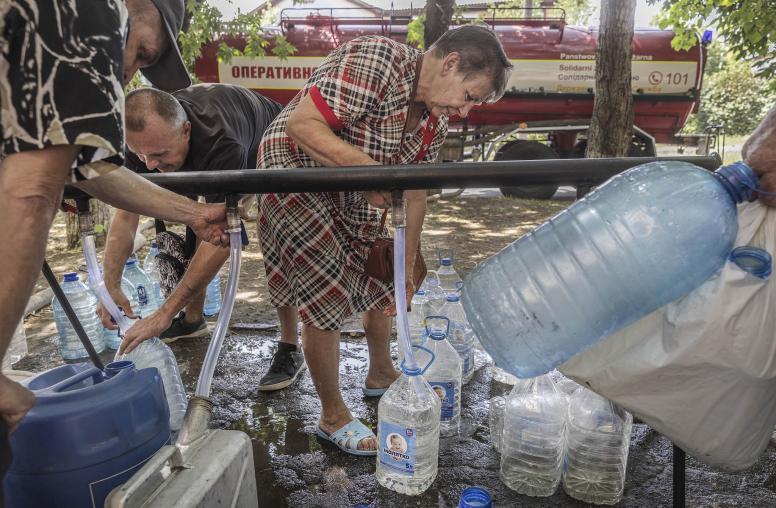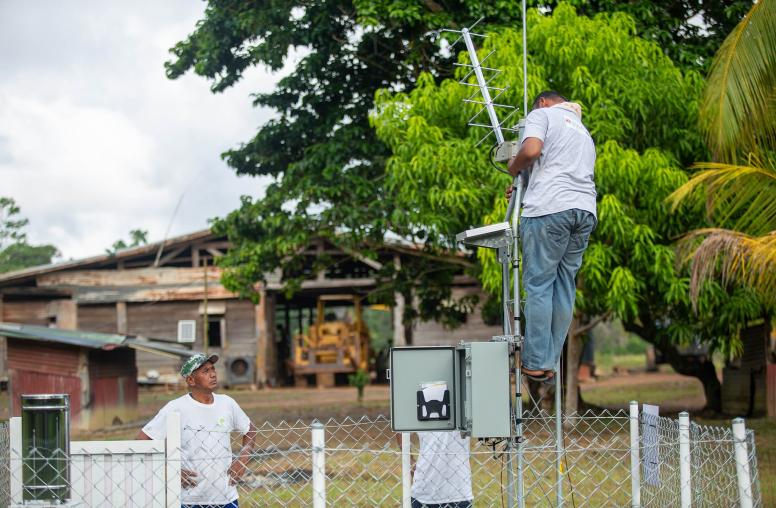Can Arab States Bounce Back from COVID and Climates Crises?
A new UNDP report says COVID and climate change have set the Arab world back and provides recommendations for how the region can recover.
More than two years into the pandemic, Arab states continue to struggle with the economic and social impacts of COVID-19. Meanwhile, climate change is devastating the region — and its governments are ill-equipped to address massive problems like water scarcity and scorching temperatures. Even before COVID, much of the region was wracked by conflict, embroiled in social tension, suffering from lagging economies and witnessing growing disquiet over the unrealized aspirations of the Arab uprisings. These challenges are detailed in the U.N. Development Programme’s recently released 2022 Arab Human Development Report, which also lays out a path for an “inclusive and resilient recovery.”

USIP’s Mona Yacoubian looks at the most significant findings from the report, the challenges to achieving a post-COVID recovery in the region and the implications for U.S. strategic interests in the Arab world.
What are the most significant findings of the 2022 Arab Human Development Report (AHDR), particularly regarding the COVID pandemic’s impacts on the Arab states region?
The 2022 AHDR provides a sobering assessment of the multiple, overlapping crises afflicting the Arab states region more than two years into the COVID-19 pandemic. The report highlights how the pandemic has “erased several years of gains in human development.” It traces the pandemic’s wide-ranging impacts across the region’s governance systems, economies and societies, particular in fragile states. COVID-related stresses on health and education systems further stretched overextended and inadequate public services. Pandemic shutdowns deepened economic distress, adding to unemployment and poverty. As in other parts of the world, the AHDR also notes widening inequality and growing public trust deficits in government institutions.
The AHDR rightly situates the challenges of pandemic recovery within the broader context of the Arab world’s pre-COVID crises with half the Arab states plagued by conflict or crisis. The region is a focal point for the global displacement crisis, hosting the largest number of refugees and internally displaced persons (IDPs) in the world. The report notes that while 5.5% of the global population resides in the Arab states region, it hosts more than 45% of the world’s IDPs and 58% of refugees (as of 2018). The region also has the world’s highest youth unemployment rate (28.6%) and suffers from some of the most acute climate change impacts. The AHDR underscores that 18 of the 22 Arab states are water scarce. Moreover, according to a March 2022 IMF report, temperatures in the region have soared at twice the pace of global temperature rise.
What are the critical challenges to achieving the report’s aspiration for “an inclusive and resilient recovery”?
The report’s spotlight on two critical global shocks — the pandemic and climate change — is a clarion call for action. It notes that the “convergence of the climate emergency with the COVID-19 pandemic … serves as a wake-up call concerning the complex and multidimensional nature of the crises facing the region …” In many ways, the 2022 AHDR recalls the 2009 Arab Human Development Report, a prescient publication that highlighted the region’s many failings on the eve of the 2011 Arab uprisings.
In response, the ADHR proposes an ambitious plan for setting the region on a path toward recovery. It seeks to leverage the region’s COVID recovery as a pivot to renew social contracts that result in “resilient, inclusive and accountable institutions.” The publication sketches an Arab “build back better” approach, identifying several junctures that present opportunities for transformative change from accelerating a green transition to a comprehensive approach to improving social services.
The UNDP report’s vision is laudable, but it faces enormous obstacles. Three challenges in particular stand out:
- Crises of overwhelming scale. The report’s analysis occurred prior to Russia’s invasion of Ukraine, another global shock with reverberations into the Arab world. The additional food, fuel and fertilizer price shocks associated with the conflict have further compounded Arab states’ COVID and climate crises impacts. Fragile states in the region continue to suffer from inflationary food and fuel prices despite a global price drop. Moreover, governance challenges in some states have only deepened. Iraq is witnessing dangerous political violence amid stalled cabinet formation efforts, and Lebanon continues to plummet toward failed state status as but two examples.
- Lack of political will. Leaders in the Arab states region have demonstrated little if any willingness to undertake reforms. Tunisia — the region’s one hope for democratic transition — has witnessed significant democratic backsliding with little indication that it will resume a path toward reform. As the AHDR highlights, corruption and lack of accountability are widespread. Lebanon stands as perhaps the most egregious example. The World Bank has termed Lebanon’s unprecedented economic meltdown to be a “deliberate depression,” with the country’s political class to blame. Lebanese politicians are currently obstructing an IMF rescue package to protect their private financial interests.
- Dwindling donor dollars and attention. The war in Ukraine — provoking significant Ukrainian refugee flows — along with food and climate emergencies in other regions have pivoted donor attention and funding away from the Middle East and North Africa. Donor fatigue was already a concern — with U.N. humanitarian appeals in the region chronically underfunded — but the combined effects of COVID, climate change and the conflict in Ukraine have raised alarms among senior U.N. officials that the region will suffer from further funding shortfalls at a time when it’s most needed.
What are the implications for the United States and its strategic interests in the region?
Given multiple crises around the world, including Russia’s invasion of Ukraine and an ascendant China, non-security threats emanating from the Middle East are paid far less attention. However, the challenges framed by the Arab Human Development Report are ignored at the risk of broader regional and potentially even global instability. Just as the 2009 Arab Human Development Report foreshadowed widespread popular protests across the region, the 2022 report may foretell a period of broader unrest and displacement provoked by overlapping COVID and climate crises.
As the United States pivots away from large footprint military-led interventions in the Middle East, it should define a new strategy for the region that better anticipates and responds to global shocks such as pandemics, climate change and rapid economic decline. While the U.S. national security apparatus has already expanded its strategic bandwidth to include the destabilizing impacts of pandemics and climate change, lead implementing agencies such as USAID should continue to deepen engagement on these challenges. Measures such as broadening the group of stakeholders involved, leveraging non-traditional sources of financing, and incentivizing innovative solutions will be critical to this approach. Finally, it will be important for the United States to maintain humanitarian and development aid to the region, despite mounting demands elsewhere.



